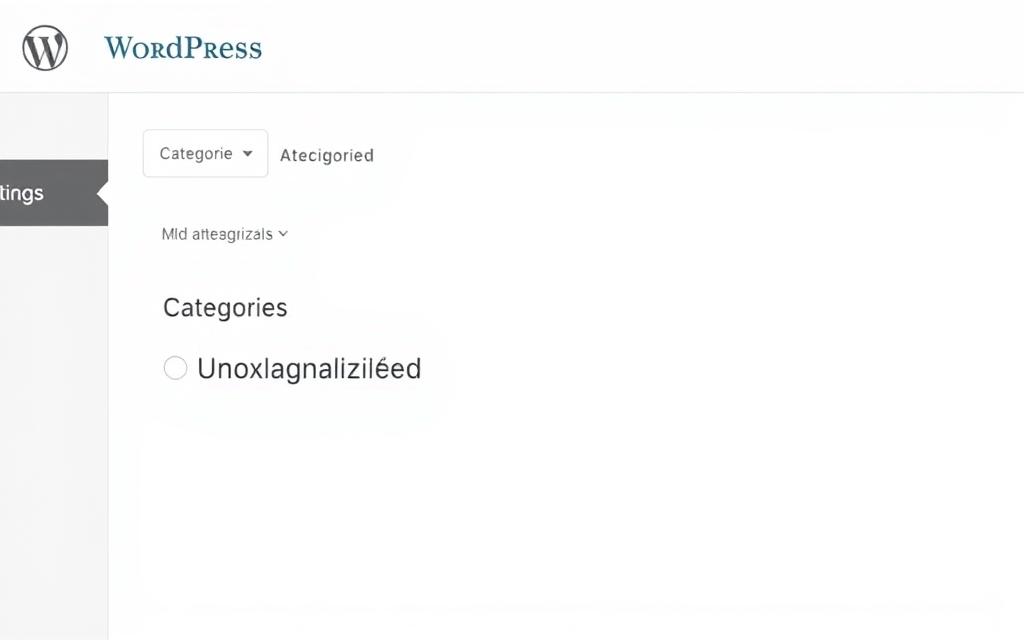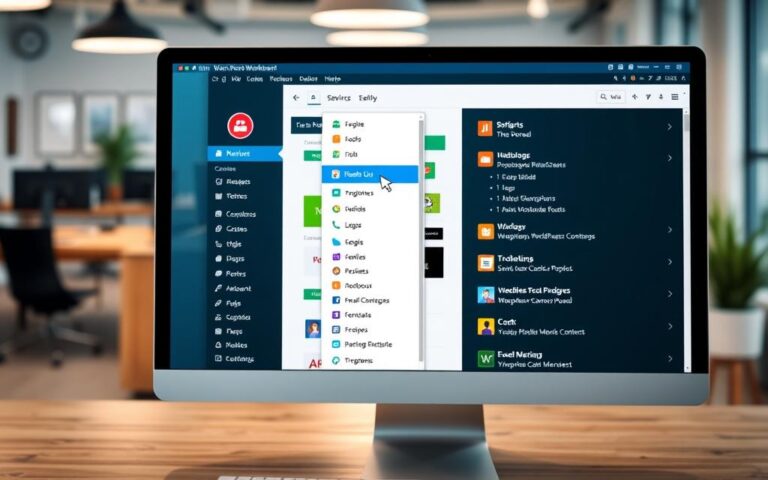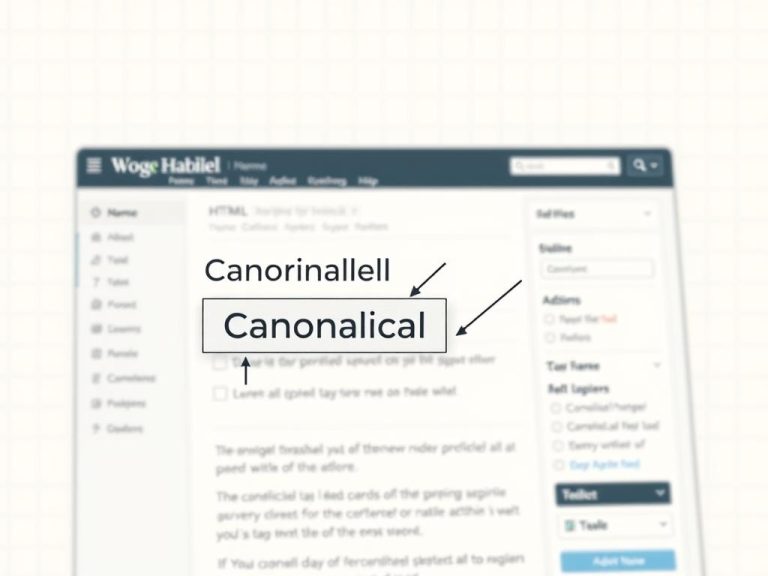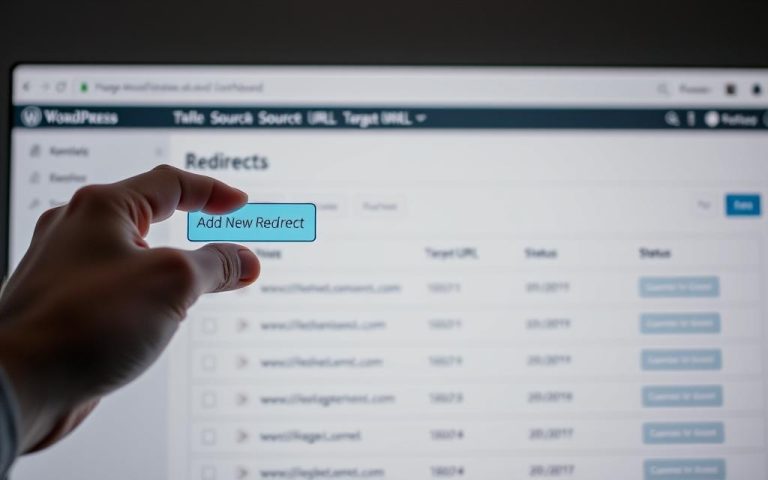Hiding the Uncategorized Category in WordPress
When working with a WordPress site, you might notice all new posts go into the ‘Uncategorized’ category. This isn’t great for keeping your site organised or helping with SEO. Learning to hide this uncategorized category makes your website more user-friendly.
We’ll show you how to do this in a few simple steps. By the end of this, you’ll know how to manage your WordPress categories better. This will make your site look neater and improve the experience for your visitors.
Introduction to the Uncategorized Category
The uncategorised category is vital in WordPress, acting as a default taxonomy. It’s given to posts that don’t fit into other categories, helping with content organisation. This ensures every post finds a place, even if it seems a bit unclear to visitors.
What is the Uncategorized Category?
When you start a WordPress site, you’ll meet the uncategorised category. It’s the default post category and holds all content initially. This helps keep things orderly from the start. It also pushes users to make new, more specific categories. This improves how visitors browse the site.
Why Does WordPress Create an Uncategorized Category?
WordPress has the uncategorised category for a few reasons. It ensures no post goes unclassified, keeping the site organized. It’s especially helpful for newcomers unsure about categories. Without it, sites can turn messy and look unprofessional. Thus, while crucial at first, the uncategorised category should be updated to reflect the site’s content and style better.
Why You Should Remove the Uncategorized Category
Many webmasters don’t realise the SEO impact of uncategorised category on their sites. Keeping this category can create navigation problems. It also produces unclear URLs, confusing both search engines and users. Proper categorisation boosts website SEO. It helps search engines index your site more effectively. This is key for more visibility and traffic.
Impact on SEO and Navigation
Uncategorised posts can weaken your SEO efforts. These posts often end up in overlooked archive pages. This lessens the power of your content marketing. Moreover, it leads to bad navigation, affecting user experience. Users might struggle going through too many posts labelled as uncategorised, which is frustrating.
Professionalism and Reader Satisfaction
Having many uncategorised posts might show a lack of professionalism. It suggests you don’t pay much attention to your blog. This could make readers think you’re negligent, and they might leave. But, by using clear categories, you show you’re organised. This improves the reading experience. A properly categorised blog helps build trust. So, users are likely to come back.
For tips on removing the uncategorised category, check out this guide.

How to Hide Uncategorized Category in WordPress
To hide the uncategorised category in WordPress, start by picking a new default category. This ensures new posts get labelled right. Go to the Writing section within WordPress settings. Here, choose a default category that fits your content better.
After setting a new default, remove the uncategorised category from your post list. Simply move your cursor over it in the Posts menu and click Delete. You can also do a bulk action. This moves all posts previously marked as uncategorised to the new category. It makes categories clearer on your site, improving how users experience it.
With these steps, new posts will automatically go into the selected category instead of being uncategorised. This small update makes your content tidier and your blog look more professional.
| Step | Action | Notes |
|---|---|---|
| 1 | Access WordPress Settings | Navigate to Settings and select Writing |
| 2 | Change Default Category | Select a more relevant category to replace uncategorised |
| 3 | Delete the Uncategorized Category | Hover over the category in Posts and select Delete |
| 4 | Reassign Posts | Ensure existing uncategorised posts are reassigned to the new default |
Steps to Change the Default Category
Changing the default category in WordPress helps you organise your posts better. It’s a process with a few simple steps. Doing this ensures that all new content is placed in the right category. This makes it easier for your readers.
Creating a New Category
First, it’s important to create new categories to replace the “Uncategorized” option. Go to the ‘Posts’ section in your dashboard. You can add a new category there by giving it a name that matches what you write about. For example, if you run a travel blog about Southeast Asia, you might name it “Travel”.
Updating the Default Post Category Setting
After making a new category, it’s time to update the default post category setting. Head to ‘Settings’ and then ‘Writing’. Now, choose the category you just made as your default. This default post category change helps in automatically sorting all future posts into the correct category instead of “Uncategorized”. Ensure you save your changes to apply your new WordPress category settings.
Removing the Uncategorized Category from Your Posts
Upon setup, WordPress assigns ‘uncategorised’ as a default category to new posts. This can be confusing, especially for busy websites. It’s crucial to remove these uncategorised posts. This step is key for a well-organised website. It helps make the site easier to use and boosts its search ranking.
To tidy up your WordPress categories, start by finding all posts tagged as ‘uncategorised’. The WordPress dashboard makes this easy. You can then edit posts in bulk or one at a time. This makes your content more consistent.
The steps to remove the ‘uncategorised’ category from your posts are outlined below:
| Step | Description |
|---|---|
| 1 | Access the WordPress dashboard and navigate to the ‘Posts’ section. |
| 2 | Select all posts needing reassignment and choose a new category for them. |
| 3 | Change the default category setting to your newly created category. |
| 4 | After ensuring all posts have a designated category, you can proceed with the deletion of ‘uncategorised’. |
In conclusion, proper post management not only makes your site easier to navigate but also helps with your SEO ranking. For steps on changing the default category, visit this tutorial.
Alternatives to Deleting the Uncategorized Category
Managing the uncategorized category in WordPress doesn’t have to mean deleting it. There are smart ways to sort categories that enhance how users feel and how the website works. A good first step is renaming the uncategorized category. This makes it fit your website’s content better.
Renaming the Uncategorized Category
Renaming the uncategorized category does a lot of good. It makes its name more useful, which can boost SEO and make URLs better. This change can make your website look more professional without changing existing URLs. A well-named category helps users find what they’re looking for easily.
Changing the Slug to Suit Your Website
Changing the category slug is crucial when renaming it. It makes the site’s goal clearer and keeps SEO strong. By updating the slug and name, you keep URLs SEO-friendly. This means you won’t lose visitors or visibility on search engines. Such changes help the site work well while getting rid of any negative vibes from the default name.
Conclusion
Managing your WordPress site well means keeping an eye on how it’s organised. The ‘Uncategorized’ category might seem minor but it can make your site look unprofessional and confuse your visitors. By using WordPress best practices, like changing the default category, you make your site look better and work better.
To manage your content effectively, you can use tools like the “get_terms” filter. For those using WooCommerce, there are specific methods to hide categories that aren’t relevant. This makes your products easier to find and improves your site’s user experience. It helps keep visitors interested and coming back for more.
By making these adjustments, your website will become more efficient and professional. It’s important to make sure your content is easy to find and stands out to your audience. Good organisation is key to a satisfying browsing experience. This is critical for any website wanting to succeed online.
FAQ
How can I hide the ‘Uncategorized’ category in WordPress?
Create a new category that fits your site’s theme. Go to ‘Settings’, choose ‘Writing’, and make this the default category for posts. Don’t forget to move old posts to the new category. This makes your site neater and boosts SEO.
What happens if I leave the ‘Uncategorized’ category as is?
Not changing the ‘Uncategorized’ category can hurt your site’s SEO. It leads to messy URLs and site structures. People might think your site is not professional. This could make them less likely to come back.
Can I rename the ‘Uncategorized’ category instead of deleting it?
Yes, you can choose to rename the ‘Uncategorized’ category. Giving it a relevant name improves the user’s experience. It keeps the category’s use without harming URLs. This can make your site look more professional.
How do I remove posts labelled ‘Uncategorized’?
To get rid of ‘Uncategorized’ posts, enter the ‘Posts’ area in WordPress. You can update the categories in bulk or do it one by one. This makes your content more consistent.
Is it necessary to create a new category to replace ‘Uncategorized’?
Creating a new category is advised for better content organization and SEO. It helps in correctly tagging future posts. This improves how visitors navigate your site.
How does the ‘Uncategorized’ category affect my site’s SEO?
The ‘Uncategorized’ category lowers your SEO value by creating non-specific URLs. Better categorization lets search engines understand your content more. This can raise your site’s visibility and its rank.
Can I change the slug of the ‘Uncategorized’ category?
Yes, changing the slug of the ‘Uncategorized’ category is possible when you rename it. It’s vital for keeping SEO quality. A clearer URL can help with site rankings and make it easier for users.















One Comment